South African cuisine consists of a great variety of influences and traditions. There are diverse flavours combining indigenous foods with the traditions of settlers and people who have visited our shores.
From the Khoisan who foraged for hundreds of edible plants to the Bantu people who were essentially pastoral. Crops were cultivated and cattle were domesticated. The Bantu who migrated from the North in about 1000AD learned Khoisan methods of meat preservation. The culinary traditions merged and these recipes are still used today.
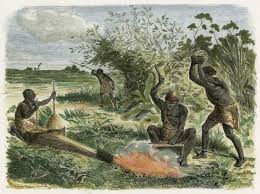
Ancient farming in South Africa
Khoi and San
Historians can tell from middens and archaeological finds that the Khoi and the San people would have had quite a varied diet. This consisted of roots, leaves, nuts and berries. Remains of Ostrich eggs have also been found. They hunted for antelope, small animals and some bird species. The Khoi who lived at the coast were known to the settlers as “strandloopers” Beach walkers. The Cape Khoi tribes ate mussels, crayfish abalone seals and penguins.
At some time, the Khoi were influenced by the Bantu people who came from the North and settled the land. Their food supply became less nomadic and more agricultural. They began farming both crops and cattle.
Mutton was popular and one of the dishes that has stood the test of time is Kaiilings (see SA food list)
Oxalis. This “common weed is edible and has been part of Indigenous cuisine for centuries
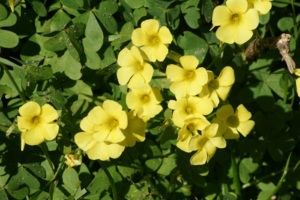
Bantu people
The Bantu people migrated south. They brought the Iron Age with them. They had sophisticated tools and they introduced agriculture. These tribes cultivated a number of crops like maize millet, sorghum and vegetables.
They also had domesticated cattle. The meat they preferred was mutton so the cattle were kept mostly for milk.
Meat was cooked over an open fire, either grilled or cooked in a three-legged pot. These Bantu people also ate insects such as locusts, termites and Mopani worms. Mopani worms are still eaten today.
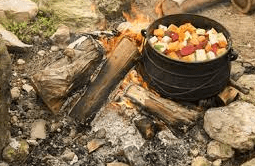
Traditional three-legged pot
Portuguese visitors
The Portuguese were the first Europeans to visit South Africa. However, they did not colonise it. They chose to rather colonise Angola and Mozambique. Many Portuguese immigrants later arrived in South Africa mostly from Madeira bringing their market gardening skills. Cookery which developed in Angola and Mozambique included the use of chillies. The South African Portuguese-influenced food is consequently fiery hot and Peri-peri flavoured food is a national favourite.
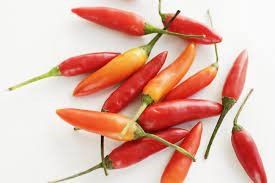
Peri-peri chillies
Dutch Settlers
The Dutch needed to find a place at the tip of Africa where they wanted to establish a refreshment station for passing ships. These ships travelled to the East on the Dutch East India trading route. Jan Van Riebeek landed at the Cape in 1652 and set about planting vegetables. The site of the first gardens can still be seen today. You can visit the Kompanjiestuin” (company’s garden), in Cape Town city. The Dutch introduced vegetables that were unknown in the Cape. The settlers traded with the indigenous people for meat.
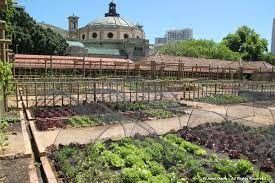
The company’s garden in Cape Town
The Dutch brought their own cuisine style which was predominantly stewed fresh ingredients. Much like the potjiekos style South Africans use at a braai today. They soon learned of the wild herbs and local plants used by the Khoi and they added these to their recipes. The addition of spices was learned from the Malay slaves. This was the “cooking pot” from which many traditional South African recipes came. One notable example is the use of Waterblommetjies (water lilies). In “waterblommetjie- bredie” which is a delicious mutton stew flavoured with sorrel.
Huguenots
The French Huguenots who settled in the Cape in 1689 brought with them their skills with winemaking. The wines of the Cape wines are of a very high standard. They also brought a new refinement to local cuisine. They introduced the tradition of serving meals in a succession of courses.

Wine barrels
.British and other Europeans
The British had a great influence on tradition and culture in South Africa having colonised it more than once. They introduced the English breakfast, happily for those who love a hearty meal in the morning. Puddings, pies and roasts with all the trimmings became popular fare.
There were German settlers who were assimilated with the Dutch settlers. Their only discernible yet vital contribution to South African cuisine was the introduction of Wurst (sausage) which evolved into Boerewors which is a South African Staple.
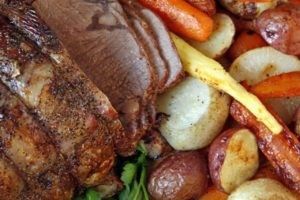
Traditional pot roast
Asian influence, Malay and Indian
The Cuisine from Asia was introduced by slaves imported by the settlers. They came mostly from Malaysia and Indonesia. They were brought here by the Dutch East India Company. These slaves brought their cooking traditions with them, which included a large variety of spices. Female slaves were often employed in the kitchens of Cape Dutch settlers where they adapted the recipes they knew to use local ingredients.
About two centuries after the slaves arrived, indentured labourers arrived from India. They were contracted to work the sugar cane plantations in Kwazulu Natal. These contracts were for 10 years. When the ten year period was up, many decided to remain in South Africa. With them, they brought a great variety of curry recipes which they adapted to use ingredients available in South Africa.
Curry with rice, pap or bread (such as with a “Bunny Chow”) is very popular with South African people.
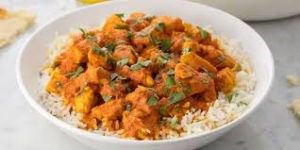
Curry and rice, a South African favourite
Search Colourdots for Great South African cuisine at some great eateries or learn to cook some great South African recipes

